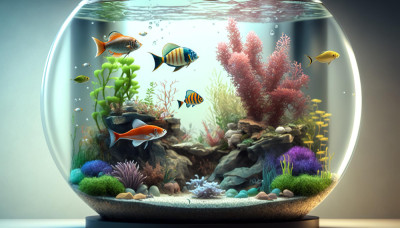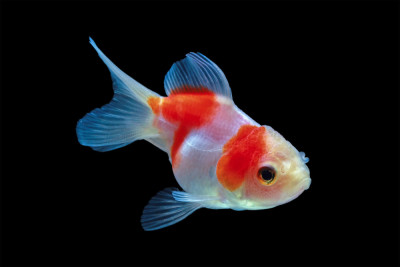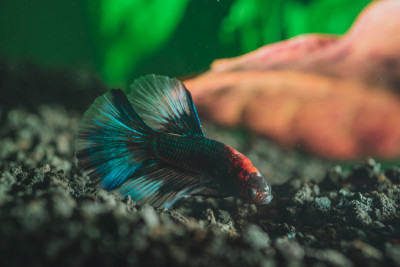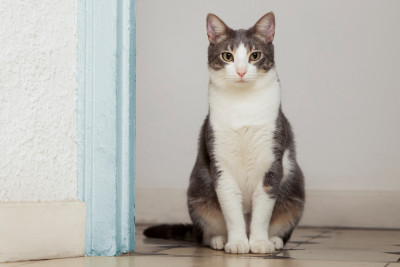-
Choosing the Right Tank
The first step in creating a tranquil home for your fish is selecting the right tank. Consider the following factors:
-
Size: Larger tanks are generally more stable and provide a better environment for fish. Choose a tank size that accommodates the fish species you want to keep while fitting comfortably in your space.
-
Shape: Tanks come in various shapes, such as rectangular, square, and cylindrical. Rectangular tanks are often preferred because they offer more surface area for oxygen exchange and swimming space.
-
Material: Most aquariums are made of glass or acrylic. Acrylic tanks are lighter but more prone to scratching, while glass tanks are more durable.
-
Setting Up the Aquarium
Properly setting up your aquarium is crucial for your fish's well-being:
-
Location: Place your tank away from direct sunlight and drafts to avoid temperature fluctuations and algae growth.
-
Substrate: Choose a substrate that suits your aesthetic preferences and the needs of your fish. Gravel, sand, and specialized substrates are all options.
-
Filtration: Invest in a quality filter that can handle the volume of your tank. Adequate filtration ensures water quality and reduces maintenance.
-
Heating and Lighting: Install a heater to maintain a stable water temperature within the ideal range for your fish species. Select appropriate lighting to enhance the aquarium's appearance and support plant growth.
-
Water Quality Management
Maintaining water quality is vital for your fish's health:
-
Cycling: Before adding fish, cycle your tank to establish beneficial bacteria that will break down harmful waste. Use water testing kits to monitor ammonia, nitrite, and nitrate levels.
-
Water Changes: Regular water changes are essential for removing accumulated toxins and replenishing essential minerals. Follow a schedule that suits your tank's needs.
-
Water Parameters: Maintain the correct pH, temperature, and hardness levels according to your fish species' requirements.
-
Fish Selection
Choose fish species that are compatible with each other and the tank size. Consider factors like size, temperament, and dietary preferences. Peaceful community fish like tetras, guppies, or mollies are popular choices for beginners. Research each species thoroughly to ensure their compatibility.
-
Aquascaping and Decor
Aquascaping and decor play a significant role in creating a tranquil atmosphere:
-
Plants: Live plants not only enhance the aesthetic appeal but also provide oxygen and help maintain water quality. Select plants that are suitable for your tank's lighting and substrate.
-
Rocks and Driftwood: Natural decorations like rocks and driftwood can create hiding spots and mimic a natural environment.
-
Minimalism: A clutter-free aquarium with open swimming spaces can create a sense of tranquility. Avoid overcrowding with decorations.
-
Background: Consider adding a background to the tank to create depth and hide wires and equipment.
-
Maintenance Routine
Establish a maintenance routine to keep your aquarium in top condition:
-
Cleaning: Regularly clean the glass, remove algae, and vacuum the substrate during water changes.
-
Filter Maintenance: Clean or replace filter media as needed to ensure optimal filtration.
-
Feeding: Feed your fish a balanced diet and avoid overfeeding to prevent water quality issues.
-
Monitoring and Troubleshooting
Monitor your aquarium's health by observing your fish and conducting regular water tests. If you notice any issues, such as fish illness or water quality problems, take prompt action to address them. Quarantine new fish before introducing them to your main tank to prevent disease outbreaks.
Conclusion
Creating a tranquil home for your fish is a rewarding endeavor that can bring serenity and natural beauty to your living space. By carefully selecting the right tank, providing appropriate care, choosing compatible fish species, and maintaining water quality, you can ensure that your aquarium becomes a peaceful haven for both you and your aquatic friends. Remember that patience and attention to detail are key to building a harmonious aquatic environment where your fish can thrive.







